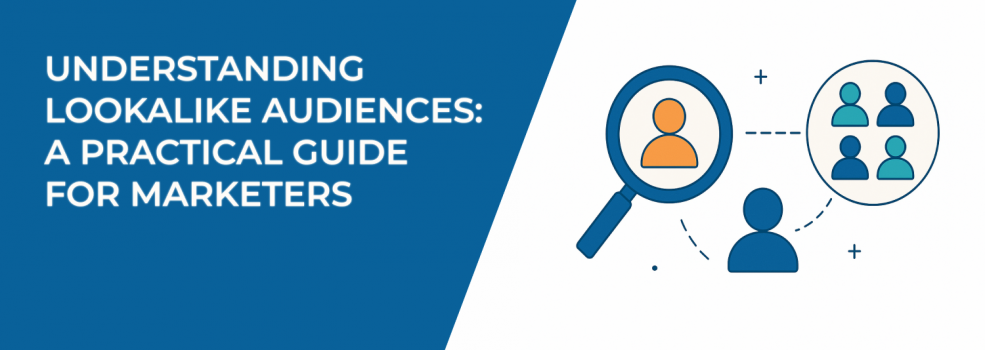Getting your ads in front of the right people is half the battle. But constantly trying to define the “perfect audience” manually? That can feel like throwing darts in the dark.
Lookalike audiences offer a smarter way to scale. Instead of targeting random users based on vague interests, you let the algorithm find people similar to those already engaging with your brand — people who are more likely to take action.
In this guide, we’ll walk you through how lookalike audiences work, how to build them properly, and how to avoid common mistakes that cost you money.
What’s a Lookalike Audience?
A lookalike audience is a group of new people who share traits with your existing customers or leads. These traits are based on behavior, interests, and demographic data collected by ad platforms like Meta, Google, or TikTok.
| Feature | Custom Audience | Lookalike Audience |
|---|---|---|
| Based on | Existing users | Algorithmic match |
| Reach | Narrow | Broad |
| Use case | Retargeting | Prospecting |
| Setup | Manual upload | Source + % selection |
So rather than guess who to target, you use data to find more of the right people — those who act like your best customers.
Want to see how this compares to other audience types? Here’s a breakdown of custom vs lookalike audiences.
1. Start With the Right Source Audience
Everything depends on your source audience. If you start with a weak or generic group, your lookalike will also be unfocused.
Here are examples of strong source audiences and why they work:
-
High-ticket customers – These are people who’ve already shown strong buying intent. Building a lookalike from them means targeting users more likely to make higher-value purchases.
-
Recent converters – Using a list of leads or customers who converted in the last 30 days helps keep your audience fresh and relevant.
-
Top AOV customers – Audiences based on higher average order value (AOV) tell the algorithm to find people who don’t just convert but spend more.
-
Engaged email subscribers – If you have a list of subscribers who open and click your emails often, these are warmer leads. Their lookalikes are more likely to be active, too.
-
People who completed a full funnel – Maybe they viewed a product, added it to cart, and made a purchase. That’s a full journey. Use that to find more buyers, not just browsers.
Avoid using “everyone who visited the site” or “clicked an ad” as your source—these groups are often too broad and include low-intent users.
For tips on identifying high-quality audiences, check out this audience targeting guide.
2. Choose the Right Lookalike Size
Platforms like Facebook allow you to pick how similar your new audience should be to your original group—usually between 1% and 10% of a country’s population.
Let’s break down what that actually means:
-
1% Lookalike – This gives you the closest match. It’s the smallest and most precise audience. Ideal when you're optimizing for conversions and want quality over quantity.
-
2–5% Lookalike – This adds scale without sacrificing too much relevance. Great for when you're ready to reach more people but still want solid targeting.
-
6–10% Lookalike – These audiences are larger but less accurate. They’re better for top-of-funnel brand awareness or testing broader market interest.
Pro tip: Start with 1% first to establish performance. Once you know it’s converting, slowly scale up to 2–5% to reach more potential customers. But don’t jump to 10% unless your budget and funnel can handle the drop in precision.
3. Use Value-Based Lookalikes When Possible
Most marketers don’t take advantage of this, but they should.
If your platform allows, upload a customer list with values attached (like total spend or lifetime value). This gives the algorithm more context—not just who your customers are, but how valuable each one is.
Why it matters:
-
It helps the system prioritize users who look like your best customers.
-
You reduce wasted spend on low-intent users.
-
Your ad budget goes further because you're focusing on quality leads.
If you're in ecommerce or SaaS, value-based lookalikes can significantly boost ROAS. Learn how to set these up with our guide to Facebook value-based lookalikes.
4. Match Your Message to a Cold Audience
A common mistake? Running warm-traffic messaging to lookalikes.
Even though they resemble your customers, they don’t know you yet. Treat them as cold prospects.
So, your ads should include:
-
A clear value proposition – What makes your product worth their time? Get straight to the point.
-
Social proof – Reviews, testimonials, and user-generated content help build trust instantly.
-
A strong, simple CTA – “Shop Now,” “Get the Guide,” or “Book a Demo.” Don’t be vague—guide them.
-
Eye-catching creative – Think scroll-stopping visuals or videos. You only have a few seconds to grab attention.
If you're wondering why your ads are reaching fewer people than expected, this article on why ad sets may get zero delivery can help troubleshoot.
5. Keep Testing and Optimizing
Lookalike audiences can stop working if they aren’t updated or tested regularly.
Here’s what to keep an eye on:
-
Test different sources – Compare a lookalike based on purchases vs one based on form submissions. Performance will vary.
-
Compare different percentages – A 1% might bring better quality leads, while a 3–5% gives you more volume. Run them side by side.
-
Check the location – Sometimes a 1% US audience performs worse than a 2% in a smaller, regional market.
-
Refresh data often – Your business evolves. Update your source lists at least monthly to keep them relevant.
And don’t forget to look beyond just clicks. Focus on metrics like cost-per-lead, cost-per-sale, and lifetime value. If performance drops, this article can help you fix non-converting Facebook ads.
Final Thoughts
Lookalike audiences are powerful, but they’re not a shortcut. They still need strategy, clean data, and thoughtful messaging to work.
To get the most from them:
-
Start with a focused, high-quality source audience.
-
Begin with 1% similarity, then test broader ranges.
-
Use value-based lists when possible to improve targeting.
-
Treat the audience as cold traffic and tailor your message.
-
Monitor performance and tweak often.
Want more ways to sharpen your targeting skills? Check out our full Facebook Ad Targeting 101 guide. And if you’re looking to upgrade your ad creatives, these AI tools might save you serious time.

